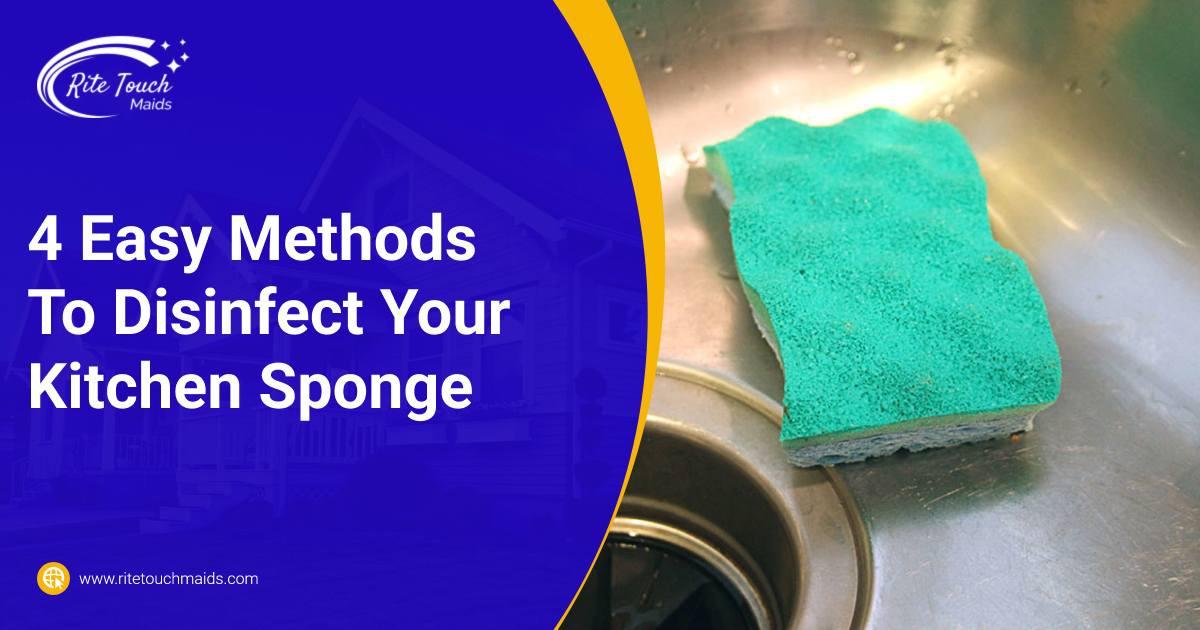Appliances and furniture tend to be the main focus of kitchen cleaning; those are the things that are usually in contact with the food. But there’s one essential item often neglected: the kitchen sponge.
Although the sponge spends the day soaked in cleaning solutions, it doesn’t mean it’s clean. Food residue builds up over time, and germs multiply, making your kitchen sponge a potential risk.
Read on and learn the best methods to keep your sponge germ-free!
What are the risks of having a dirty sponge?
A dirty sponge can be home to a lot of germs. A 2017 study found 326 different species of bacteria in a kitchen sponge, with a density similar to the human intestinal tract—that’s disgustingly much!
Some of the bacteria that can be found in a kitchen sponge are:
- E. Coli. It can cause diarrhea, stomach cramps, nausea, and vomiting.
- Salmonella. It can cause food poisoning and typhoid fever.
- Staphylococcus aureus. It can cause bone infections, endocarditis, and toxic shock syndrome.
How to disinfect your kitchen sponge
So, to help you keep your kitchen a risk-free zone, you need to disinfect your dish sponge at least every other day. Luckily, there are various methods to do it! Here are the most effective ones.
Method #1. Microwave it
This option is one of the best to disinfect your sponge. First, make sure your sponge doesn’t have metal fibers. Then, wet the sponge, put it in a microwave-safe bowl, and get it inside the microwave to heat it for 4 minutes.
Allow the sponge to cool for 15 minutes, then wring it out.
Note: This method is demonstrated to kill bacteria, including E. Coli.
Method #2. Sink it in a bleach solution
No one can deny bleach is an effective disinfectant. To use this method:
- Mix ¾ cup of bleach and 1 gallon of water.
- Soak the kitchen sponge for 5 minutes.
- After time has passed, take it out of the solution, rinse it, and let it dry.
Method #3. Use the dishwasher
Your dishwasher can do a lot more than wash dishes. Put your sponge on the top rack and let the device run on a heat-dry setting. The longest and hottest cycle will work better, but any option involving heat will get the job done.
After it finishes, take the kitchen sponge, and it will be ready to go!
Alternative green method: Vinegar bath
Vinegar is a great alternative but may not be as effective as the previous methods. However, even if it is a “less” effective method, it is a great option to sanitize your sponge. Also, you can say this is the most natural way to do it.
How to disinfect your kitchen sponge with vinegar:
Mix 3 cups of water and 1 cup of vinegar in a large saucepan and boil it on the stove. Still boiling, add your sponge to the solution, soak it with a stick or spoon and let it rest for two more minutes. Once done, let the sponge cool, and rinse to finish.
Do you want to learn other useful cleaning tips?
Our blog has plenty of valuable tips and tricks! On top of that, Rite Touch Maids serves the Lawrenceville area with the best cleaning services. Get your instant quote on our homepage!



